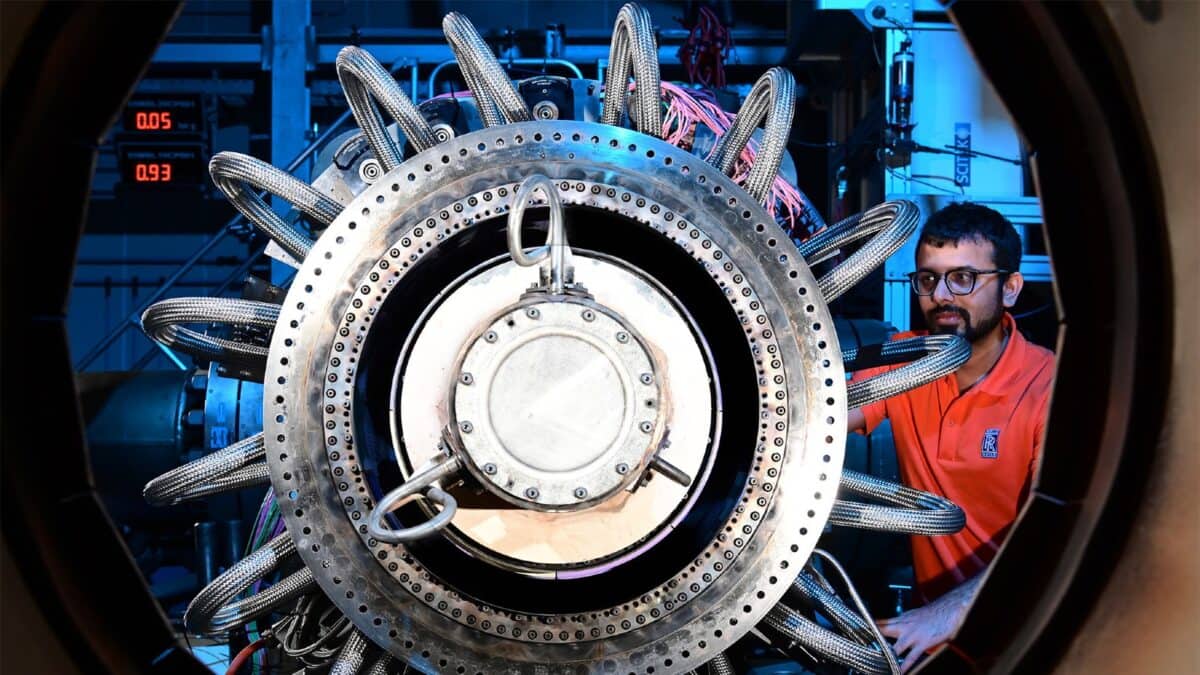The Rolls-Royce (LSE:RR.) share price trebled in 2023.
Of all the stocks on the FTSE 100, none did better.
In contrast, Lloyds Banking Group (LSE:LLOY) shares rose by 5%, putting them in the bottom third.
But I’m not going to dwell on the past.
Instead, I’m asking which of these two stocks is more likely to double in value, by the start of the next decade?
Flying high
Rolls-Royce currently has a stock market valuation of £25.1bn.
For 2024, the average of the analysts’ forecasts of profit before tax (PBT) is £1.42bn. This means its forward price-to-earnings (P/E) ratio is currently 17.7.
Although this feels on the high side — the average for the FTSE 100 is around 11 — it has been at this level before.
Assuming the P/E ratio remains unchanged, for the share price to double by 2030, earnings will have to increase to £2.84bn.
Based on the present growth rate in its profits, I think this could happen.
As recently as 2020, the company was loss-making. Indeed, the bounce back from the impact of the pandemic has been impressive. But as it came from such a low base, there will inevitably be a slowdown in its rate of earnings growth.
The ‘experts’ are predicting a PBT of £1.82bn, in 2025. If they are right, an increase of approximately £250m a year is required — between 2026 and 2029 — to double the company’s market cap.
To me, this looks achievable.
Although large engine flying hours have recovered strongly, they are still 15% lower than before Covid. This means its Civil Aerospace division has the potential to grow further.
And I’m sure its Defence division will benefit from increased conflicts around the world. Also, the company’s embarked on a £200m annual cost-cutting programme.
However, income investors will lament the absence of a dividend. And the company still remains particularly vulnerable to a shock to the aviation industry.
But what about Lloyds’ prospects?
A dark horse
Bank shares generally attract a lower valuation.
Indeed, Lloyds stock is currently changing hands at around four times its forecast PBT for 2024, of £7.03bn.
McKinsey & Company reckons the 2010-2022 average for the sector is 9.1.
If this were applied to the ‘black horse bank’, its shares would be worth 133% more than they are today.
However, banking stocks appear to be out of favour with investors, which is perhaps why they have such low earnings multiples. Three failures in the United States, in early 2023, appear to have unfairly tarnished the sector.
Surprisingly, the higher interest rate environment — which has helped boost profits — hasn’t lifted investor sentiment. But concerns about the UK economy, where Lloyds generates nearly all of its revenue, have affected its valuation.
Personally, I can’t see it doubling in value over the next six years, unless it completes some sort of mega merger.
On the other hand
Even so, the bank continues to pay a generous dividend.
The expectation is for a payout of 3.03p per share in 2024 — a yield of 7.1%.
Assuming nothing changes, it will take 14 years for the dividends received to equal today’s share price. This produces the same result as if the stock doubled in value.
Okay, I accept this is longer than six years. But it’s still a reason to consider holding the shares.








